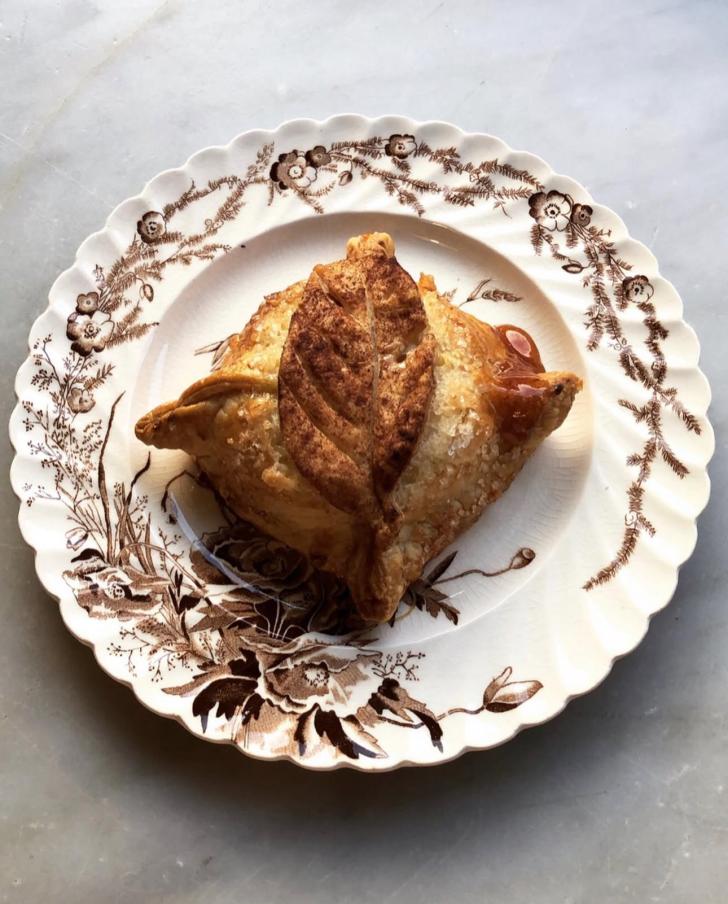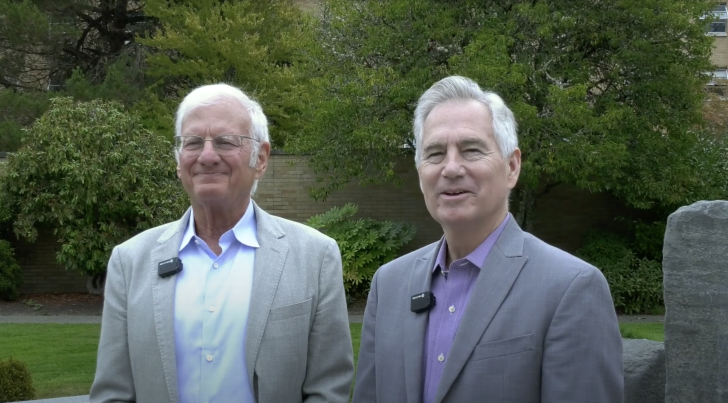Modernist Cuisine Meets Whole-Food Nutrition in Acclaimed Chef's Visit

Published
Edible foams, iridescent gels and laser-assisted omelets may seem a world away from the whole-food philosophy that guides Bastyr University's nutrition programs. But the high-flying world of "molecular gastronomy" pursues similar goals, according to chef Maxime Bilet, who gave an eye-catching presentation in the Bastyr University auditorium.
Bilet helped shake up the culinary world last year with the six-volume Modernist Cuisine, an encyclopedic guide to laboratory-inspired cooking. He co-authored the book with Nathan Myhrvold, chief executive of Intellectual Ventures and the first chief technology officer at Microsoft, and Chris Young, founder of the experimental kitchen The Fat Duck.
The book is a definitive guide to so-called "molecular gastronomy," which brings the high-tech wizardry of physics and chemistry to bear on cooking. At Bastyr, Bilet showed photos of eggs arranged in laser-precise vertical stripes, embryonic tomato-and-basil spheres, and a stir-fry wok cut open to reveal the chemical transformation in process.

Image courtesy of Modernist Cuisine
There's no separating cooking from science, he argues, so cooks need to understand the science at play.
"As soon as you impose heat on a piece of food, you're a physicist," he says. "You are transforming the cellular structure of that food."
Molecular gastronomists are notorious for relying on elaborate pieces of equipment, such as centrifuges and sous-vide water ovens, that are impractical for a home kitchen. The chefs, chemists, machinists and dozens of staffers on the Modernist Cuisine project find space for their experimentation in a world-class laboratory/kitchen in a Bellevue, Washington, airplane hangar just a few miles south of Bastyr's campus.
The point is to "reflect what's possible" — and then to document the work in stunning photography, Bilet says. His presentation featured photos from the book, many of them using sliced-open pans and pots. Bilet recounted the hot oil splattering his arms while he stir-fried with a cutaway wok. The visuals are essential to the project, he says.
"We wanted everything to be very visual, both for communicating clear information and also for making things beautiful and getting people excited about it," he says.
Bilet joined the project after holding a series of prestigious culinary positions at The Fat Duck in England and elsewhere. The book won the James Beard Cookbook of the Year award this spring, and Bilet and Myhrvold recently announced a Modernist Cuisine at Home companion book.
But what about health? One student asked whether the Modernist Cuisine team tested the nutritional content of their techniques.
Not yet, Bilet says. For now they are focused on maximizing flavor, refining techniques and inspiring people to try them out. But the work has broader social value, he says, because making healthy food more exciting is one way to help Americans eat smaller portions and more vegetables.
"How can you create a satisfying experience with less food?" he asks. "When you have something that's so flavorful, so intense that you don't need so much to be satisfied, that's a very healthy relationship with food."
He describes a carrot soup prepared with a centrifuge to separate juices from starch (removing starch, a "flavor inhibitor," is a theme of the book). To help people transition from fast food, "you need to give them bold flavors," he says.
The talk was part of what may become an ongoing collaboration. Last year, Bastyr nutrition professor Doris Piccinin, MS, RD, CDE, CD, led students on a tour of the Intellectual Ventures lab/kitchen. During his visit, Bilet invited culinary students to apply for positions on the Modernist Cuisine staff.
In a sense, Bilet says, modernist cuisine isn't so different from Bastyr's whole-foods perspective, which emphasizes eating a diversity of food in the least-processed form possible. Both approaches are about honoring ingredients by using them well. Modernist cuisine embraces some of the technology of industrialized food, but it rejects the profit focus of processed-food industries, he says.
"It's all about intention," Bilet says. "Technology does not make food unhealthy. The problem is when industry has only profit-minded intentions."
Learn more about studying nutrition and culinary arts at Bastyr.


